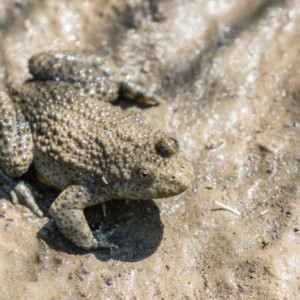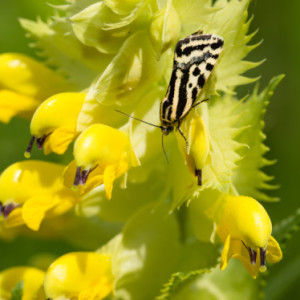Viscri
We set out south for the nearby village of Viscri, a well-preserved village that has benefited from much restoration of the historic Saxon houses by the Mihai Eminescu Trust. We took a walk through the cobbled streets admiring the colourful Saxon houses, each with its own pear tree out front. Passing by a large White Stork nest with a gang of House Sparrows squatting in its lower reaches, we struck upwards towards the fortified church. We had some time here to explore the church and hear more about Saxon culture, including the carefully arranged seating structure in the churches, before the ringing of the bells heralded the christening of one of Viscri's less than 20 remaining Saxon inhabitants.
Just outside Viscri we stopped again to explore a large swathe of meadows, taking a little time to appreciate a large aggregation of blue butterflies by our parking place. A Reed Warbler sang from the side lines, and the 'quip' calls of Quail and the jangle of Corn Bunting drifted around us as we walked. Along with some now familiar species we found Fairy Flax Linum catharticum , Pignut Conopodium majus , the 'three dimensional' leaves of Woolly Thistle Cirsium eriophorum , and a small patch of Brown Nonea Nonea pulla. We also spotted a couple of hemi-parasites, with Field Cow-wheat Melampyrum arvense and Thyme
Broomrape Orobanche alba quietly extracting nutrition from neighbouring plants, along with the bright blooms of Gallic Rose Rosa gallica .
We tried to get our heads round an array of blue butterflies, including Amanda's Blue, Mazarine Blue, Silver-studded Blue and Adonis Blue, and also found the attractive Spotted Sulphur moth. A pair of Lesser Spotted Eagles clashed talons as they passed by.
Continuing onwards, we stopped in at Meşendorf to visit its Saxon church. In shady areas the ground was dotted with seemingly innocuous small pits, which housed a healthy colony of Ant-lions. Close relatives of the lacewings, the predatory larvae of these invertebrates lurk in these pits waiting for insects such as ants to blunder into their traps. Sweet William Dianthus barbatus was spotted in the grounds along with the full life cycle of the Firebug.
Our final stop was to visit some meadows on the road between Meşendorf and Crit. Both Whinchat and Woodlark were singing from wires, and the rising temperature had encouraged White Storks, Lesser Spotted Eagles and Common Buzzards into the air; the latter two clashing briefly before the buzzard drifted away. In the meadow the upright Large Milkwort Polygala major was added to our list, along with a worn Osiris Blue. More Yellow-bellied Toads could be spotted in water-filled ruts, and a Grass Snake slinked off as we closed in.
Extract from Wildlife Travel Transylvania trip report, Laurie Jackson, June 2019




Comments
Sign in or get an account to comment.


